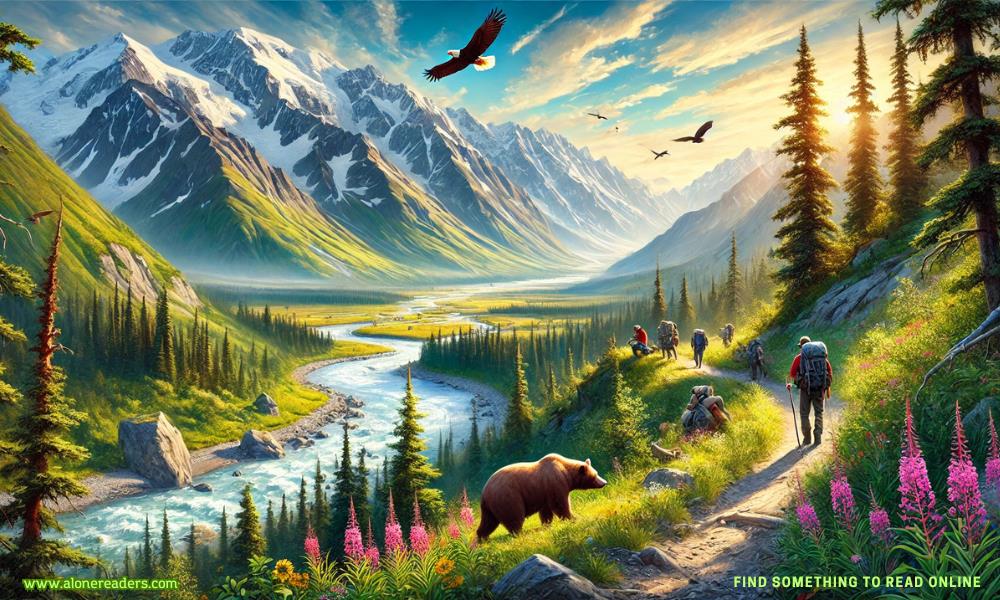
Alaska, the crown jewel of American wilderness, is home to some of the most remote, rugged, and awe-inspiring national parks on Earth. From snow-capped peaks and grizzly bears to vast glaciers and turquoise fjords, Alaska’s national parks promise unmatched adventure for nature lovers, thrill-seekers, and solitude seekers alike. These parks don’t just offer scenic beauty—they offer experiences that make you feel like you’re standing at the edge of the world.
Whether you dream of watching brown bears catch salmon in Katmai or hiking beneath the shadow of North America’s tallest peak in Denali, this guide will walk you through how to explore Alaska’s national parks with useful details about access, costs, accommodations, and tips to stay safe in the wild.
Why Visit Denali:
Denali National Park is one of Alaska’s most iconic destinations, home to Denali (formerly Mount McKinley), the tallest mountain in North America at 20,310 feet. The park spans six million acres of wild terrain, including tundra, forest, glaciers, and rivers.
Attractions and Activities:
Getting There:
Fly into Fairbanks or Anchorage, then drive or take the Alaska Railroad to Denali. The park entrance is roughly 4 hours from Anchorage and 2 hours from Fairbanks.
Accommodation & Food:
Estimated Total Cost (3 days):
Total: $1,050–$2,100 per person
Why Visit Katmai:
Katmai is world-famous for bear viewing, especially at Brooks Falls, where brown bears snatch leaping salmon mid-air. The park is also rich in volcanic landscapes and pristine lakes.
Attractions and Activities:
Getting There:
Fly to King Salmon via Anchorage. From King Salmon, take a floatplane to Brooks Camp. This journey is part of the adventure!
Accommodation & Food:
Estimated Total Cost (3 days):
Total: $1,046–$4,450 per person (luxury vs. budget camping)
Why Visit Kenai Fjords:
Kenai Fjords offers stunning glacial coastlines, sea kayaking, wildlife cruises, and marine life like whales, puffins, and seals.
Attractions and Activities:
Getting There:
Drive from Anchorage to Seward (about 2.5 hours) or take the scenic Alaska Railroad.
Accommodation & Food:
Estimated Total Cost (3 days):
Total: $500–$1,600 per person
Why Visit Wrangell-St. Elias:
This park is massive—larger than Yellowstone, Yosemite, and Switzerland combined. It features active volcanoes, icefields, and ghost towns.
Attractions and Activities:
Getting There:
Drive to Chitina, then take a small bush plane or drive the 60-mile McCarthy Road (unpaved and rugged).
Accommodation & Food:
Estimated Total Cost (3 days):
Total: $750–$1,850 per person
Weather Preparedness:
Alaska’s weather is unpredictable. Pack layers, waterproof gear, and thermal clothing—even in summer. Temperatures can vary from 30°F to 70°F in a day.
Wildlife Safety:
Bear spray is essential in most parks. Follow strict bear safety protocols, especially in Katmai and Denali. Avoid hiking alone and make noise on trails.
Limited Cell Service:
In remote parks, don’t expect reliable internet or phone service. Carry paper maps or download offline versions. Satellite phones can be rented if needed.
Reservation Planning:
Accommodations, especially in Katmai and Wrangell-St. Elias, must be reserved months in advance. National park lodges sell out quickly for summer months.
Costs Vary Widely:
Because of the remoteness, flying to and within Alaska adds up. However, camping and planning DIY adventures can keep things budget-friendly.
Best Time to Visit:
Final Thoughts
Exploring Alaska’s national parks is not just a trip—it’s an expedition into one of the last truly wild places on Earth. Whether you’re watching bears in Katmai, hiking beneath Denali’s towering peak, or kayaking past glaciers in Kenai Fjords, the experiences here will stay with you for life.
Alaska demands a bit more planning and budget than your average vacation, but the payoff is pure, majestic, and soul-stirring adventure. With preparation, respect for nature, and a curious heart, you’ll find that Alaska doesn’t just live up to the hype—it exceeds it.
Let your journey to the Last Frontier begin.